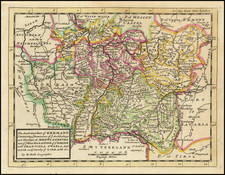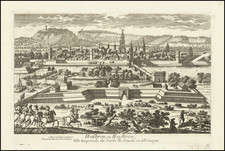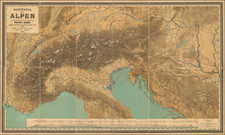Cercle de Baviere map by Alain Manesson Mallet, published in Frankfurt in 1686, is a beautifully detailed miniature map of the Bavarian region. This map provides a captivating depiction of the area, highlighting notable cities such as Ratisbonne, Passau, Munich, Salzburg, and others.
Despite its small size, the map exhibits intricate details, allowing viewers to explore the geography and layout of the region. The inclusion of these key cities provides valuable insights into the urban centers of Bavaria during the 17th century.
Alain Manesson Mallet's maps are known for their meticulousness and accuracy, and the Cercle de Baviere is no exception. The map's fine craftsmanship and attention to detail make it a remarkable representation of the region.
Published as part of Mallet's famous atlas, this miniature map adds to the collection of geographic knowledge presented in his publications. Mallet's contributions to cartography, including his use of miniaturized maps, have made his works highly regarded and sought after by researchers and collectors.
Alain Mannesson Mallet (1630-1706) was a French mapmaker and engineer who served in the armies of Louis XIV. After rising through the ranks, Mallet was appointed as Inspector of Fortifications, a job which also required mathematical skills and which made him a competent military engineer. Eventually, he joined the court of Louis XIV at Versailles, where he taught math and focused on writing.
Mallet is best known for his Description de L’Univers, first published in 1683, in five volumes. A wide-ranging geographical work, the Description included textual descriptions of the countries of the world, as well as maps of the celestial sky and the ancient and modern worlds. The Description continued to be published until the early eighteenth century. He also published a work in three volumes on warfare (1684) and a primer on geometry (1702).









![[Bavaria and Baden-Württemberg] A Benigni Lettori, ecoui la descrittione del Ducato di Baviera, con gl altri Dominiijcirconvicini di nuovo con ogni deligentia revisto et dato in luce l'anno MDLXX . . .](https://storage.googleapis.com/raremaps/img/small/92018.jpg)

![[Augsburg] Augusta](https://storage.googleapis.com/raremaps/img/small/93275.jpg)


